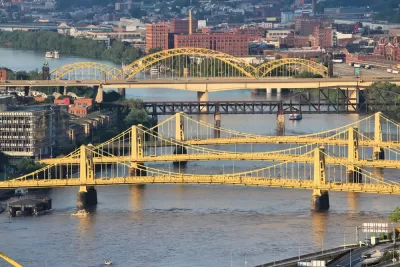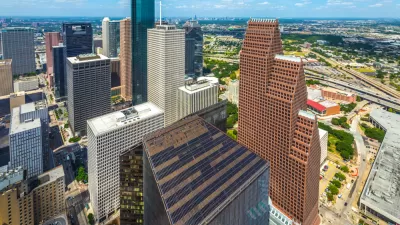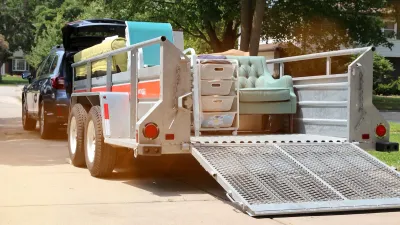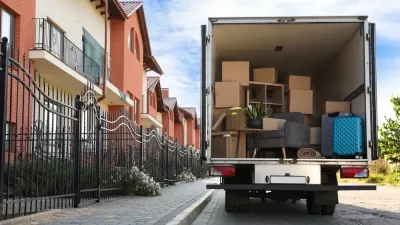Americans move less than they once did, meaning that struggling communities are home to a greater percentage of the country.

The American economy is often discussed as if it were one cohesive juggernaut, but prosperity and employment aren't evenly spread among the different regions and people. How Americans and their government will deal with the lumpiness of the economy is not at all clear.
"If jobs are plentiful in Denver (unemployment rate: 2.6 percent) and Salt Lake City (unemployment rate: 2.8 percent), then Economics 101 suggests it's time for a big migration west from the Rust Belt to the Boom Belt," Heather Long reports for the Washington Post. But Americans don't move as much as they once did. "It's expensive and risky to leave a place your family has been living in for generations, and there's no guarantee the job you move for will still exist in a few years," Long writes. Beyond practical concerns, Long argues that, culturally, it’s becoming less common for workers to go to where the jobs are.
In trying to revive the communities that are falling behind, various strategies have been attempted: some try to stabilize shrinking industries while others hope to push communities toward what they see as the jobs of the future. Long spoke with economist, Joseph Stiglitz, who thinks communities are better off trying to evolve. "Stiglitz points to Pittsburgh as the true American success story, a place that evolved from a steel city into a tech and health-care hub," Long writes.
FULL STORY: America’s forgotten towns: Can they be saved or should people just leave?

Alabama: Trump Terminates Settlements for Black Communities Harmed By Raw Sewage
Trump deemed the landmark civil rights agreement “illegal DEI and environmental justice policy.”

Study: Maui’s Plan to Convert Vacation Rentals to Long-Term Housing Could Cause Nearly $1 Billion Economic Loss
The plan would reduce visitor accommodation by 25% resulting in 1,900 jobs lost.

Why Should We Subsidize Public Transportation?
Many public transit agencies face financial stress due to rising costs, declining fare revenue, and declining subsidies. Transit advocates must provide a strong business case for increasing public transit funding.

Paris Bike Boom Leads to Steep Drop in Air Pollution
The French city’s air quality has improved dramatically in the past 20 years, coinciding with a growth in cycling.

Why Housing Costs More to Build in California Than in Texas
Hard costs like labor and materials combined with ‘soft’ costs such as permitting make building in the San Francisco Bay Area almost three times as costly as in Texas cities.

San Diego County Sees a Rise in Urban Coyotes
San Diego County experiences a rise in urban coyotes, as sightings become prevalent throughout its urban neighbourhoods and surrounding areas.
Urban Design for Planners 1: Software Tools
This six-course series explores essential urban design concepts using open source software and equips planners with the tools they need to participate fully in the urban design process.
Planning for Universal Design
Learn the tools for implementing Universal Design in planning regulations.
Smith Gee Studio
Alamo Area Metropolitan Planning Organization
City of Santa Clarita
Institute for Housing and Urban Development Studies (IHS)
City of Grandview
Harvard GSD Executive Education
Toledo-Lucas County Plan Commissions
Salt Lake City
NYU Wagner Graduate School of Public Service





























